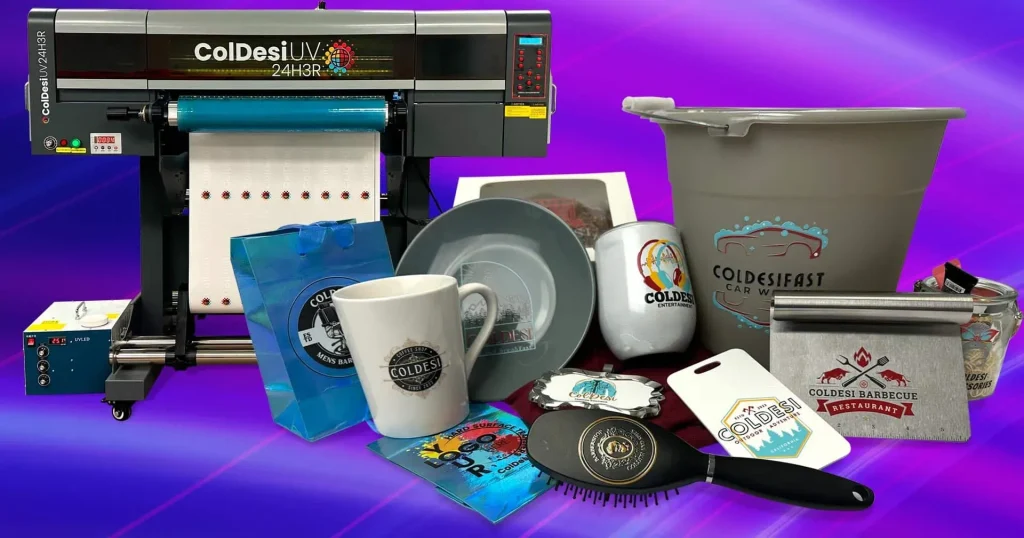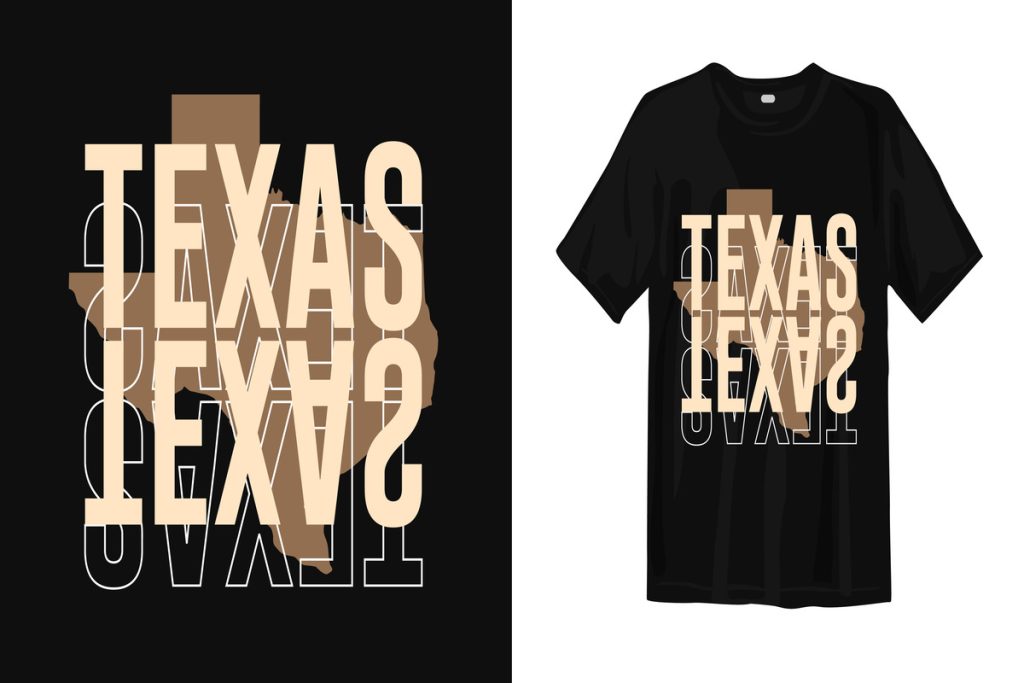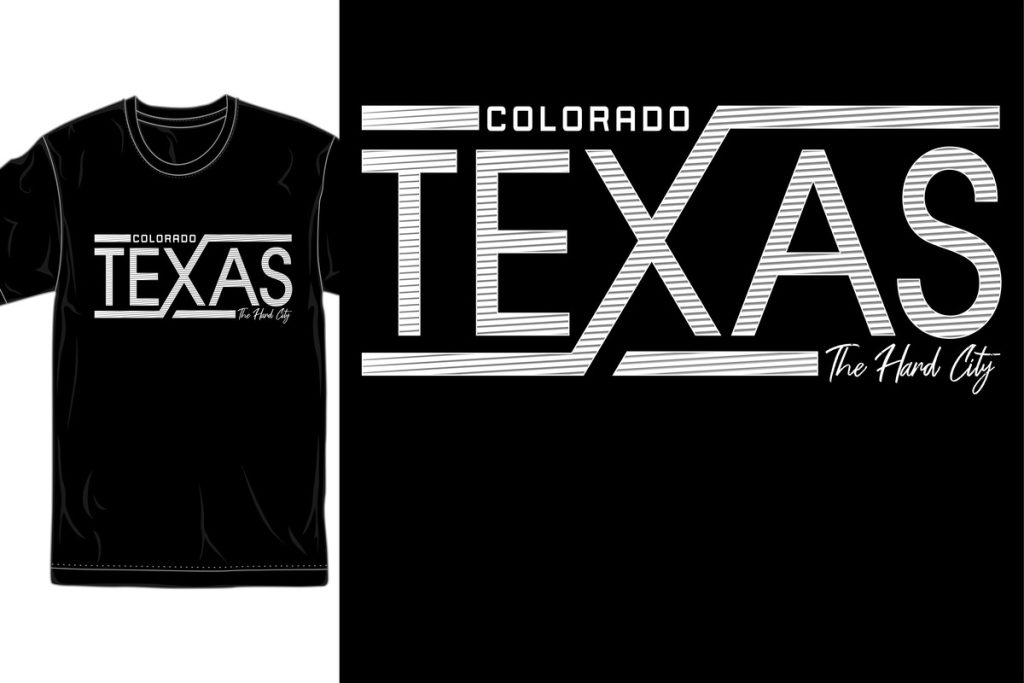UV DTF printing is revolutionizing the way we think about printing technology, making it a standout choice in the world of custom apparel printing. This innovative method utilizes ultraviolet light to cure inks applied to a film, allowing for exceptional color vibrancy and durability across various materials. As businesses seek sustainable printing solutions, UV DTF emerges as a flexible option that accommodates everything from textiles to plastics. With an increasing demand for personalized products, this advanced UV printing technique enables companies to meet consumer preferences for quality and customization. Join us as we explore the nuances of UV DTF printing and the future of this dynamic printing landscape.
Also known as ultraviolet direct-to-film printing, this cutting-edge technique offers a contemporary approach to creating high-quality prints. Utilizing advanced curing methods, it eliminates the limitations of traditional printing processes, such as direct-to-garment or screen printing, allowing for vibrant designs on a multitude of substrates. As industries move toward more eco-friendly practices, this form of direct film printing stands out for its efficiency and adaptability. Whether in fashion or promotional items, this technology is paving the way for personalized solutions that resonate with the evolving market. Delve into the advantages and trends surrounding this game-changing printing technology.
Understanding UV DTF Printing Technology
UV Direct to Film (DTF) printing is revolutionizing the printing landscape with its reliance on ultraviolet light for ink curing. This precise method not only enhances the quality of the final print but also broadens the types of substrates that can be utilized, ranging from textiles to rigid materials. The ability of UV DTF printing to deliver vibrant colors and sharp details while maintaining durability amid varying environmental conditions positions it as a preferred choice in the printing industry.
Recent advancements in UV printing technology have expanded the potential of UV DTF applications. The introduction of LED UV curing systems has led to faster processing speeds, increasing efficiency and reducing waste associated with traditional methods. As businesses shift towards more sustainable printing solutions, UV DTF printing stands out as an eco-friendly choice due to its lower energy consumption and minimal material waste, effectively contributing to a greener planet.
The Versatility of UV DTF Printing
UV DTF printing’s versatility is one of its standout features, allowing it to cater to a diverse range of industries. For instance, custom apparel printing has gained a significant boost through this technology, enabling businesses to offer personalized clothing with intricate designs that remain crisp and vibrant over time. Beyond apparel, the adaptability of UV DTF has extended its applications to signage, promotional products, and even packaging, providing endless opportunities for creative expression.
This flexibility in substrates not only enhances product offerings for print shops but also enables them to meet the rapidly evolving preferences of consumers. As markets continue to evolve, businesses equipped with UV DTF printing technology can stay competitive by quickly adapting to trends and delivering high-quality, custom solutions that satisfy customer demands.
Quality and Durability in UV DTF Printing
One of the primary advantages of UV DTF printing is the exceptional quality and durability of the finished products. The ultraviolet curing process results in prints that boast deep, vibrant colors and sharp, detailed imagery. Unlike other printing methods, such as traditional screen printing or thermal transfer, UV DTF prints resist fading and wear, making them suitable for both indoor and outdoor applications. This longevity ensures that products maintain their aesthetic appeal and functionality over time.
The robustness of UV DTF prints is particularly beneficial for items subjected to frequent handling or harsh environmental factors. As consumers increasingly seek high-performance products, the durability advantage of UV DTF printing positions businesses to thrive. Furthermore, this technology is instrumental in upholding brand integrity, as high-quality prints help to establish trust and reliability in the eyes of consumers.
Current Market Trends and UV DTF Printing
The rise in popularity of UV DTF printing reflects broader market trends favoring personalized and high-quality products. With consumers leaning towards unique and customized solutions, businesses are adopting UV DTF technology to fulfill these requirements. Market research indicates a robust growth trajectory for the UV printing sector, driven by rising consumer demands for vivid and durable prints on various materials.
As customization becomes a norm rather than an exception, the printing industry must adapt to meet changing consumer behaviors. UV DTF printing not only accommodates these changes but also anticipates future trends, making it a strategic investment for businesses aiming to capture market share. By leveraging UV DTF printing, companies can explore new markets and elevate their product offerings, gaining a competitive edge in a crowded landscape.
Comparative Analysis: UV DTF vs. Traditional Printing Methods
To fully appreciate the uniqueness of UV DTF printing, it is crucial to compare it to traditional printing methods. While techniques like thermal transfer and screen printing have their merits, they often lag in terms of color vibrancy and print detail. UV DTF’s use of ultraviolet light for curing facilitates sharp transitions and intricate designs that are difficult to achieve with traditional methods. This level of detail is essential for brands that want to make a strong visual statement through their products.
Additionally, UV DTF printing showcases superior functionality in terms of turnaround times. Traditional methods often require more extensive setups and drying times, which can slow production. Conversely, UV DTF’s instantaneous curing enables quicker production cycles, allowing businesses to respond swiftly to orders without compromising quality. This efficiency can significantly enhance a print shop’s capacity to handle large volumes while maintaining exceptional standards.
Best Practices for Optimizing UV DTF Printing
To achieve outstanding results with UV DTF printing, adhering to best practices is crucial. Preparation starts with meticulous calibration and conditioning of substrates to ensure adhesion and print accuracy. Each surface type may require specific settings or primers to achieve the best results, thus emphasizing the need for expertise in substrate preparation to avoid common pitfalls during the printing process.
Selecting high-quality UV inks also plays a vital role in the successful outcome of a print job. The right ink can make all the difference in color vibrancy, durability, and overall aesthetic appeal. In addition, understanding different curing methods is essential, as they impact the longevity and finish of the printed product. Businesses that prioritize these best practices will not only elevate their product quality but also enhance their reputation in the highly competitive printing industry.
Frequently Asked Questions
What is UV DTF Printing and how does it differ from traditional printing technologies?
UV DTF printing, or UV Direct to Film printing, utilizes ultraviolet light to cure inks onto films, enabling vibrant and durable prints on various surfaces. Unlike traditional printing technologies that may rely on heat or mechanical processes, UV DTF delivers high-resolution outputs quickly, specifically enhancing quality for custom apparel printing and other applications.
What are the advantages of using UV DTF Printing for custom apparel printing?
The advantages of UV DTF printing for custom apparel include superior color quality, durability against fading and scratching, and the ability to print on diverse materials such as fabrics, plastics, and metals. This versatility allows businesses to cater to unique consumer demands, making UV DTF a leading choice in the sustainable printing solutions market.
Can UV DTF Printing be considered a sustainable printing solution?
Yes, UV DTF printing is regarded as a sustainable printing solution due to its efficient ink usage and lower energy consumption compared to traditional methods. Recent advancements in LED UV technology further enhance its environmental viability, aligning with the growing market trend towards sustainability in the printing industry.
What materials can be used with UV DTF Printing?
UV DTF printing is versatile and can be applied to a wide range of materials, including textiles, plastics, metals, and more. This makes it ideal for producing items such as custom apparel, signage, and promotional products, aligning with the increasing demand for high-quality and personalized prints.
How does UV DTF Printing ensure print durability and quality?
UV DTF printing ensures print durability and quality through its UV curing process, which solidifies inks immediately upon application. This method results in prints that are vibrant, resistant to fading, scratching, and water, making them suitable for outdoor use and high-stress applications, crucial for modern consumer needs.
What trends are influencing the growth of UV DTF Printing in the market?
Trends influencing the growth of UV DTF printing include an increased demand for customized products, advancements in printing technology, and a shift towards sustainable practices. Consumers are increasingly seeking personalized and high-quality items, positioning UV DTF printing to meet these evolving preferences effectively.
| Key Aspect | Details |
|---|---|
| Technology Used | Utilizes UV light to cure inks on films, allowing for high-quality prints. |
| Material Versatility | Can print on various substrates including plastics, metals, and textiles. |
| Quality Output | Produces vibrant and long-lasting prints resistant to fading and scratching. |
| Market Demand | Growing applications in custom apparel and promotional items due to consumer preferences. |
| Best Practices | Involves careful substrate preparation, quality inks selection, and understanding curing methods. |
Summary
UV DTF printing is revolutionizing the printing industry by providing unparalleled quality and versatility across multiple materials. This innovative technique harnesses ultraviolet light to ensure prints are not only visually stunning but also durable, making it an ideal choice for various applications from promotional items to custom apparel. As the market increasingly shifts towards high-quality, personalized products, the significance of UV DTF printing continues to grow. By adopting the best practices associated with this method, businesses can maximize their competitive edge and meet the evolving demands of consumers seeking unique and lasting solutions.



